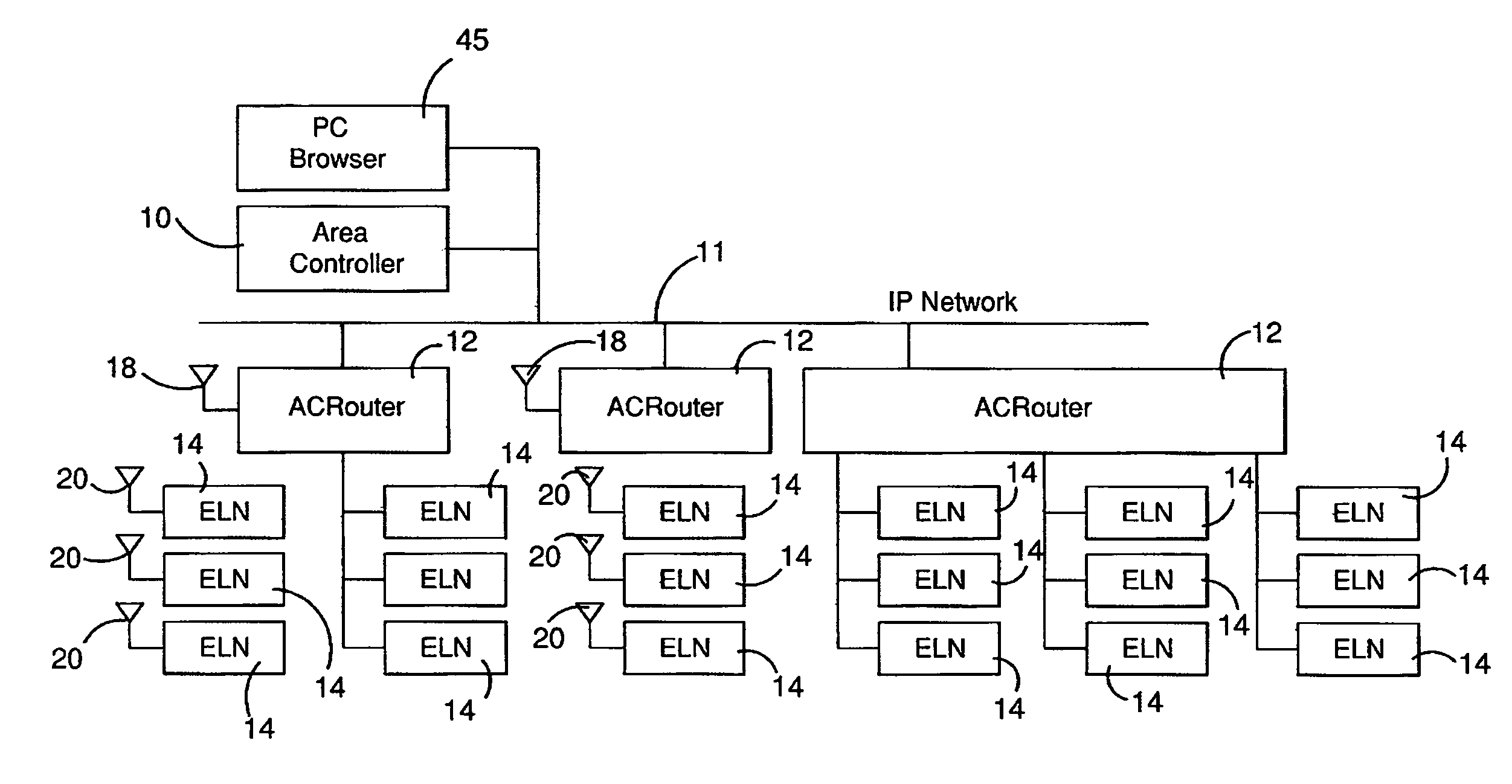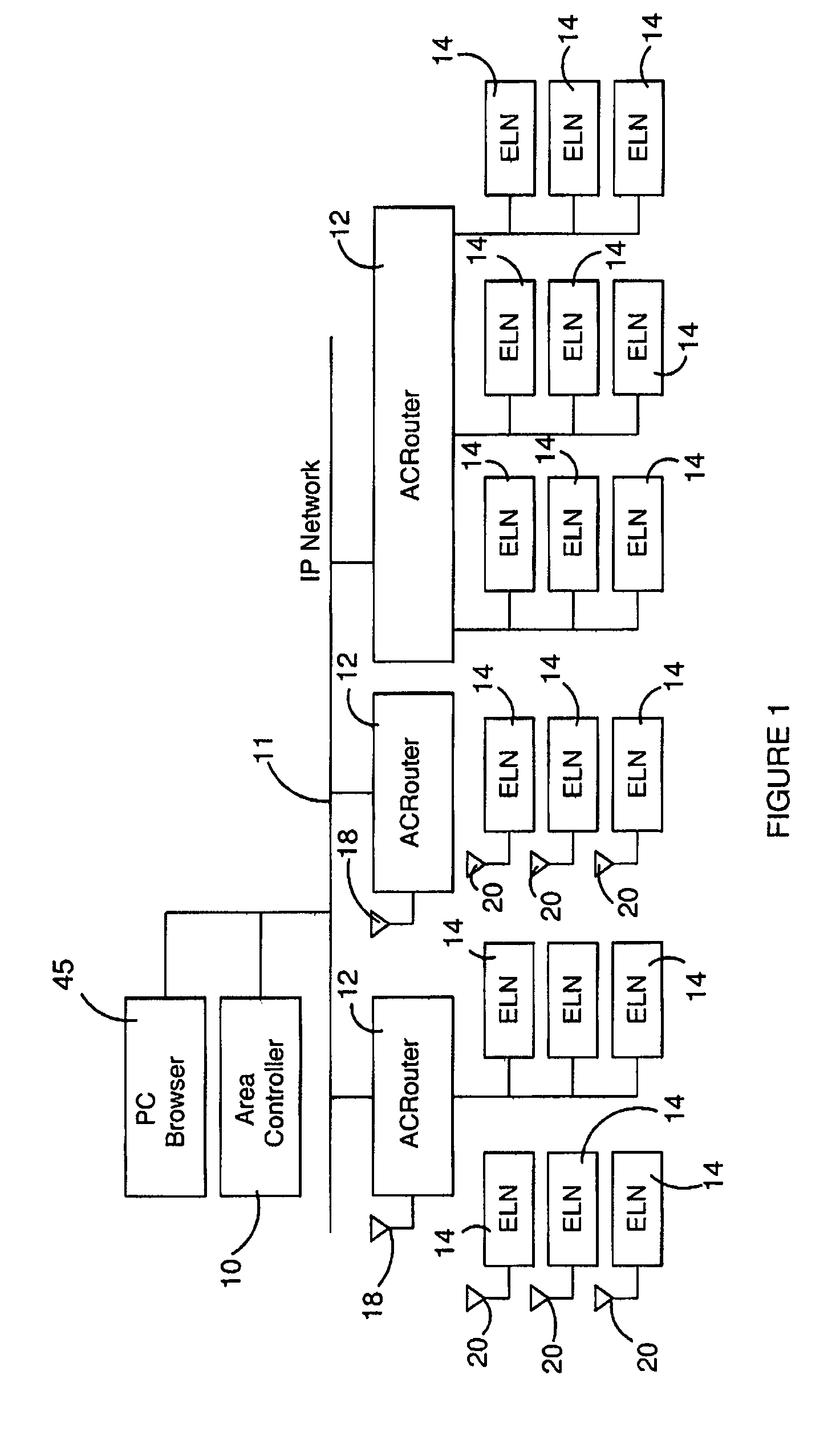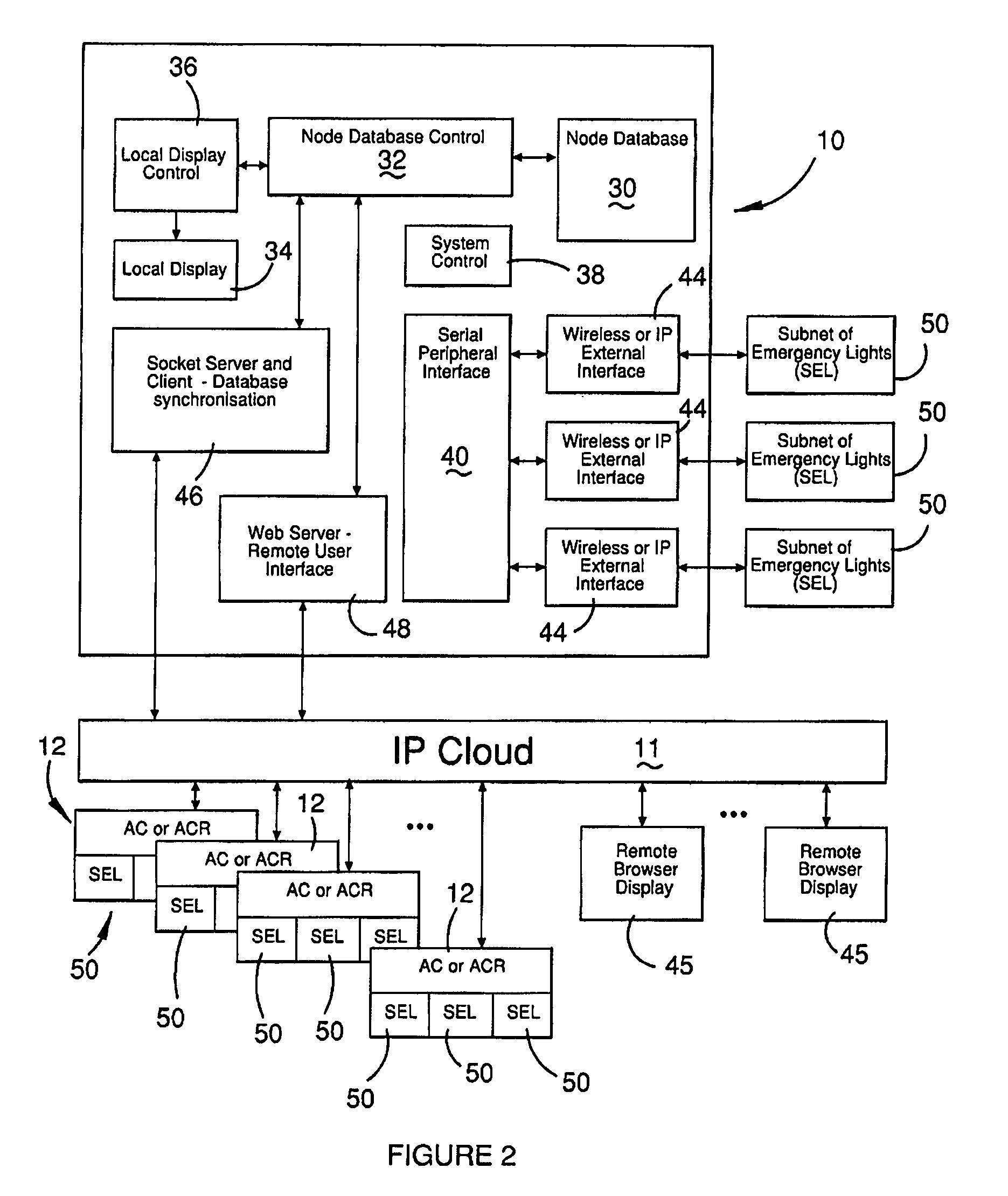Emergency lighting system
a technology of emergency lighting and emergency lighting, applied in emergency power supply arrangements, active radio relay systems, wireless communication, etc., can solve the problems of bulky wiring and difficult installation in old buildings
- Summary
- Abstract
- Description
- Claims
- Application Information
AI Technical Summary
Benefits of technology
Problems solved by technology
Method used
Image
Examples
Embodiment Construction
[0059]With reference to FIG. 1, an emergency system such as an emergency lighting system is shown which comprises a central area controller 10 which is connected to a number of routers 12 via a network 11 which may comprise the internet, a LAN, a WAN, or a PSTN. Other communication networks could also be used.
[0060]Each router communicates with a plurality of devices 14. If the system is an emergency lighting system, the devices 14 are emergency lighting devices which are illuminated or remain illuminated in an emergency situation when power is cut off to an area so that the lighting devices 14 are visible and can show an exit path or an exit direction, etc. from a building. Most typically, the devices are exit signs. Other emergency devices include Spitfires (non-maintained quartz halogen incandescent ceiling mounted light fittings), fluorescent battens and Floods (non-maintained twin directional incandescent wall mounted light fittings).
[0061]In the embodiments shown, some of the ...
PUM
 Login to View More
Login to View More Abstract
Description
Claims
Application Information
 Login to View More
Login to View More - R&D
- Intellectual Property
- Life Sciences
- Materials
- Tech Scout
- Unparalleled Data Quality
- Higher Quality Content
- 60% Fewer Hallucinations
Browse by: Latest US Patents, China's latest patents, Technical Efficacy Thesaurus, Application Domain, Technology Topic, Popular Technical Reports.
© 2025 PatSnap. All rights reserved.Legal|Privacy policy|Modern Slavery Act Transparency Statement|Sitemap|About US| Contact US: help@patsnap.com



